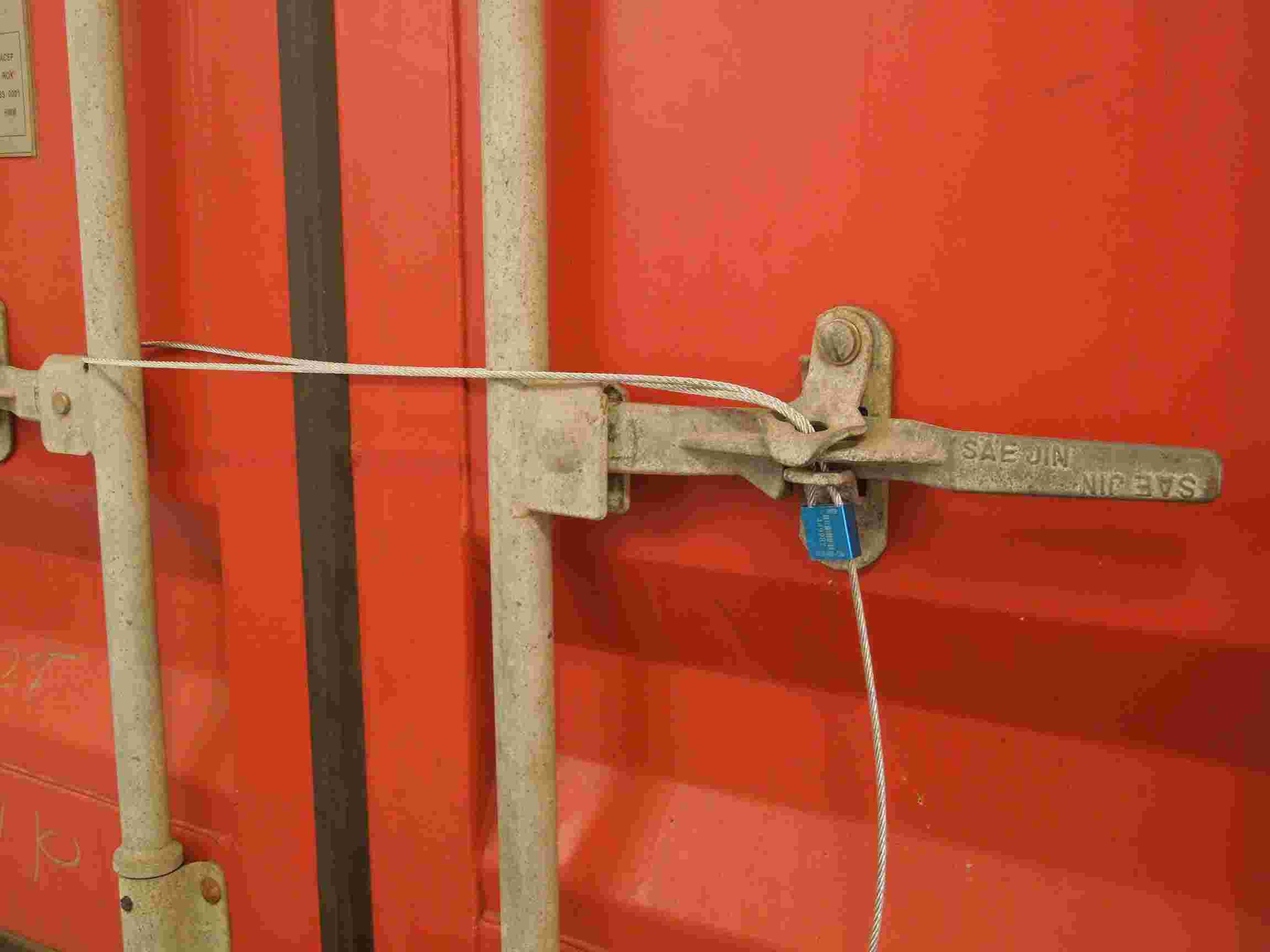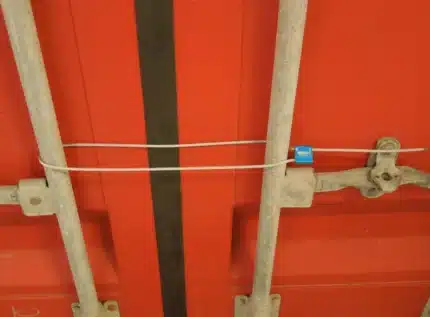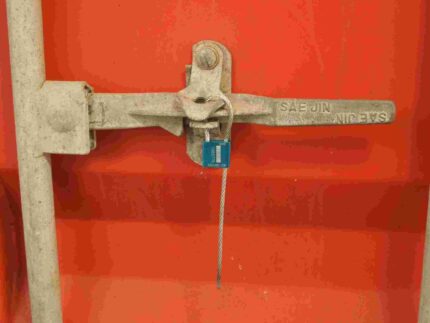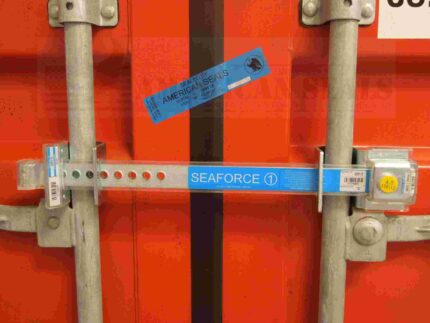- Bar / Barrier Seals
- Bolt Seals
- Cable Seals
- Pull Tight Cable Seal 17″ (5/64″ / 1.8mm) PTSEAL (17″)
- Pull Tight Cable Seal 39″ (5/64″ / 1.8mm) PTSEAL (39″)
- Pull Tight Cable Seal – Model JoeGuard Series 12″
- Pull Tight Cable Seal – Model JoeGuard Series 39″
- Pull Tight Cable Seal – Model JoeGuard Series 58″
- Pull Tight Cable Seal – Model JoeGuard 78″
- Plastic Seals
- Tin Seals
- Meter Seals
- Tamper-Proof Labels
- Trailer Seals
How to Apply Bolt, Cable, and Bar Seals

The Seal of Security: Proper Application of Bolt, Cable, and Bar Seals
Bolt, cable, and bar seals are indispensable tools for securing cargo and assets across various industries, from logistics to oil and gas. Their effectiveness, however, hinges on correct application. A poorly applied seal is no better than an unsecured latch. This post will guide you through the proper steps for applying these three essential types of high-security seals into a latch mechanism, ensuring maximum security and compliance.
The Importance of High-Security Seal Application
Proper application is the final and most crucial step in the security process. These seals are designed to be tamper-evident and require specialized tools (like bolt cutters) to remove, which signals any unauthorized access attempt. Incorrect application can lead to:
- Compromised Security: The seal might be easily bypassed or removed without leaving evidence.
- Non-Compliance: Failing to meet regulatory standards for cargo security (e.g., C-TPAT, ISO 17712).
- Disputes: Difficulty in proving tampering occurred during transit.
Applying Bolt Seals: The Standard for Shipping Containers
Bolt seals are the gold standard for securing shipping containers and are typically ISO 17712 certified for high security.
Application Steps for a Bolt Seal
- Inspect the Latch: Ensure the locking mechanism (e.g., container door latch) is fully closed and the holes on both parts align perfectly.
- Separate the Components: A bolt seal consists of two parts: the metal bolt and the metal-housed barrel (lock).
- Insert the Bolt: Push the metal bolt through the aligned holes of the latch from the outside. The head of the bolt should rest securely against the latch.
- Engage the Barrel: Take the barrel and firmly push it onto the exposed end of the bolt until you hear a distinct “click.” This sound confirms the locking mechanism has engaged.
- Verify the Lock: Attempt to pull the bolt and barrel apart by hand. If it separates, the seal is defective or improperly applied—do not use it. A properly applied bolt seal will spin freely but cannot be pulled apart.
- Record the Seal Number: Note the unique serial number on your manifest or security log for tracking and audit purposes.

JOEGUARD 39 around bars
Applying Cable Seals: Flexibility and Versatility
Cable seals offer greater flexibility due to their adjustable length and are ideal for diverse applications, including truck doors, rail cars, oil valves, and intermodal containers.
Application Steps for a Cable Seal
- Thread the Cable: Pass the steel cable through the aligned holes of the latch mechanism.
- Insert into the Lock Body: Thread the end of the cable through the one-way locking mechanism in the aluminum or plastic lock body.
- Cinch Tightly: Pull the cable end through the body until the loop is cinched as tightly as possible around the latch. Minimize slack to prevent tampering, such as creating space for a shim or for the cable to be snagged and pulled apart.
- Pull Test: Tug firmly on the cable. If the cable pulls back out, the locking mechanism failed, and the seal must be replaced. A correctly applied seal will not retract.
- Record and Inspect: Log the serial number. Visually confirm the cable is secure and the lock body is intact.
Applying Bar Seals (Barrier Seals): Maximum Door Security
Bar seals, often called barrier seals or sealing bars, offer a robust, secondary layer of physical security, typically on high-value cargo containers, by spanning the container’s locking rods.
Application Steps for a Bar Seal
- Position the Bar: Place the rigid steel bar across the exterior vertical locking rods of the container doors. The locking cups/heads on the bar should fit over the door handles or locking staples.
- Align the Holes: Ensure the holes on the bar’s locking mechanism (often a padlock-style box or integrated bolt-lock feature) align with the corresponding point on the door rod/staple.
- Lock the Mechanism: Insert the required separate locking device (often a bolt seal or high-security padlock) through the aligned holes.
- If using an integrated mechanism: Fully engage the internal locking pin or bolt until it clicks.
- Test the Bar: Attempt to move, rotate, or pull the bar away from the door. It should be immovable and firmly secured against the locking rods.
- Secure and Log: If a separate bolt seal was used to lock the bar, follow the bolt seal logging procedures. Record the unique identifier of the bar seal itself.
Key Takeaway: Always Verify!
No matter the type of seal, the final step—verification—is non-negotiable. After application, always perform a firm pull test and visually inspect the seal for any sign of damage or improper seating. A properly applied, high-quality seal is your most effective deterrent against theft and unauthorized access. Choose AmericanSeals.com for all your high-security bolt, cable, and bar seal needs!




